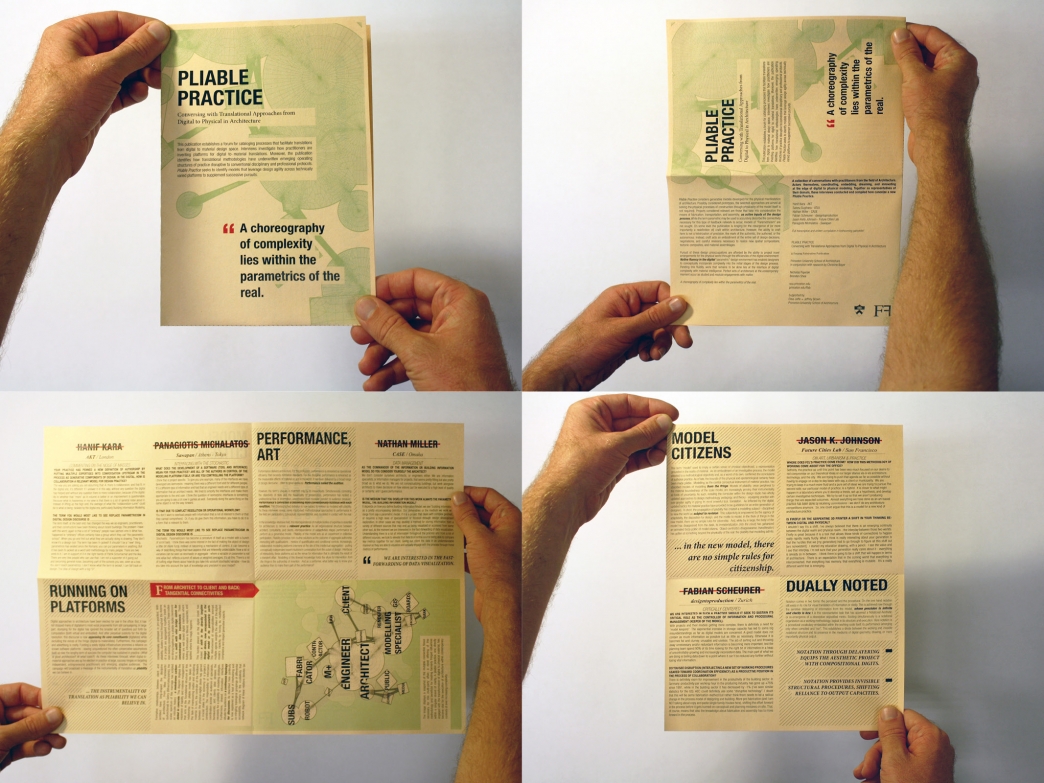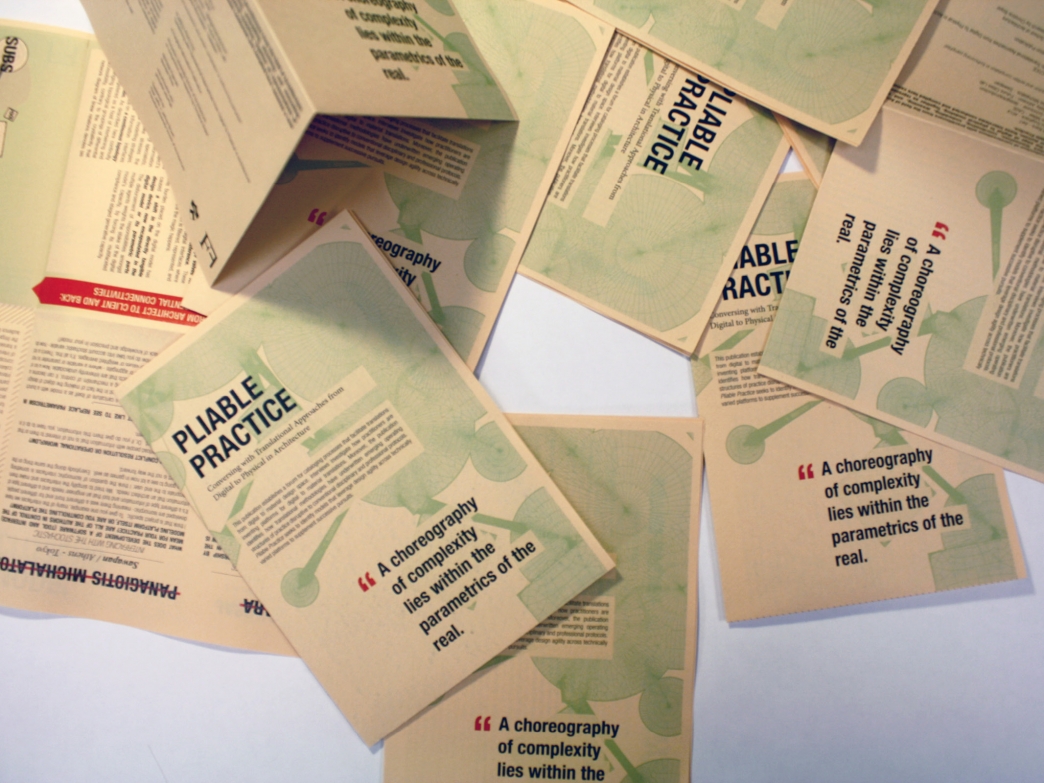Pliable Practice: Conversing with Translational Approaches from Digital to Physical in Architecture
This publication establishes a forum for cataloging processes that facilitate translations from digital to material design space. Interviews investigate how practitioners are inventing platforms for digital to material translations. Moreover, the publication identifies how translational methodologies have underwritten emerging operating structures of practice disruptive to conventional disciplinary and professional protocols. Pliable Practice seeks to identify models that leverage design agility across technically varied platforms to supplement successive pursuits.
-
Pliable Practice considers generative models developed for the physical manifestation of architecture. Possibly considered prototypes, the selected approaches are aimed at solving the physical processes of construction (though physicality of the model itself is not required). Projects considered relevant are those that take into consideration the means of fabrication, transportation, and assembly; as active inputs of the design process. While the term parametric may be used to accurately describe the connectivity necessary for this type of feedback network to occur, models of “Parametricism” are not sought. On some level the publication is longing for the resurgence of (or more importantly a redefinition of) craft within architecture. However, the ability to craft here is not a fetishization of precision, the mark of the authentic, the authored, or the autonomous. Instead, craft acts an embodiment of the entire set of design decisions, negotiations, and careful revisions necessary to realize new spatial compositions, tectonic composites, and material assemblages.
Pursuit of these design preoccupations are afforded by the ability to project novel arrangements for the physical world through the efficiencies of the digital environment. Native fluency in the digital “parametric” design environment has enabled designers to conceptually incorporate complexity into the initial stages of the design process. Pending this fluidity, work that remains to be done lies at the interface of digital complexity with material intelligence. Perfect acts of architecture at the contemporary moment occur as studied and resolute engagements with matter.
A choreography of complexity lies within the parametrics of the real.
-
A collection of conversations with practitioners from the field of Architecture. Actors themselves, coordinating, embedding, dreaming, and innovating at the edge of digital to physical modeling. Together as representatives of their domain, these interviews conducted and compiled here canonize a new Pliable Practice.
Hanif Kara - AKT
Satoru Sugihara - ATLV
Nathan Miller - CASE
Fabian Schreurer - designtoproduction
Jason Kelly Johnson - Future Cities Lab
Panagiotis Michalatos - Sawapan
Full transcription and written compilation in forthcoming pamphlet!
PLIABLE PRACTICE
Conversing with Translational Approaches from Digital To Physical in Architecture
A Forging Fabrication Publication
Princeton University School of Architecture
In conjunction with research by Christine Boyer
Nicholas Pajerski
Brendan Shea
soa.princeton.edu
princeton.edu/ffab
Supported by:
Elise Jaffe + Jeffrey Brown
Princeton University School of Architecture



